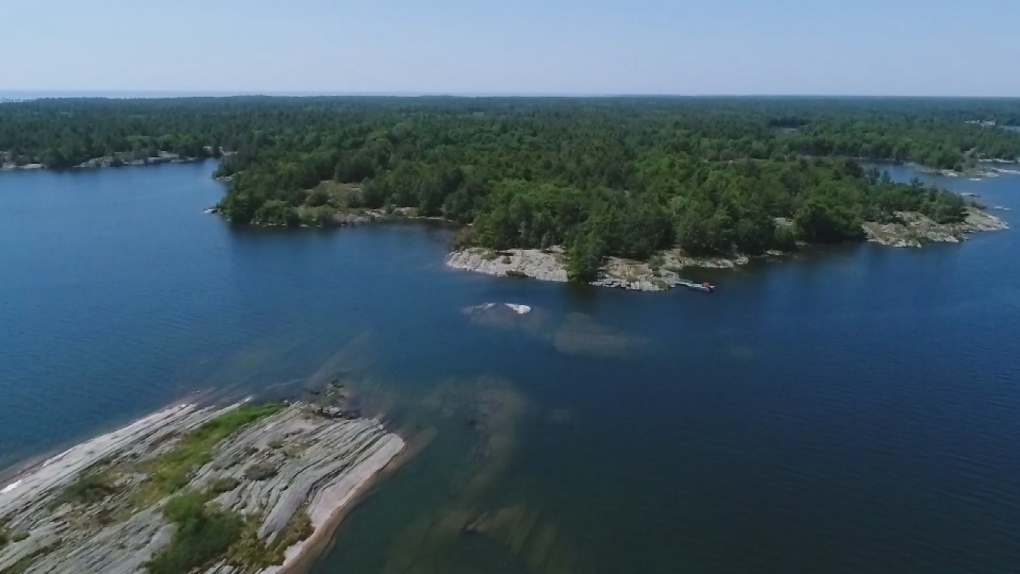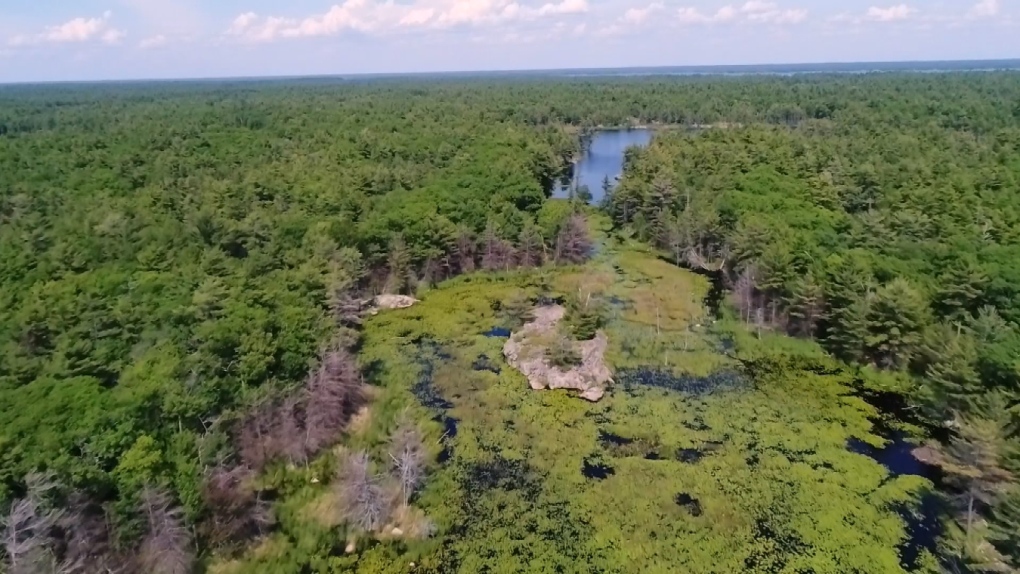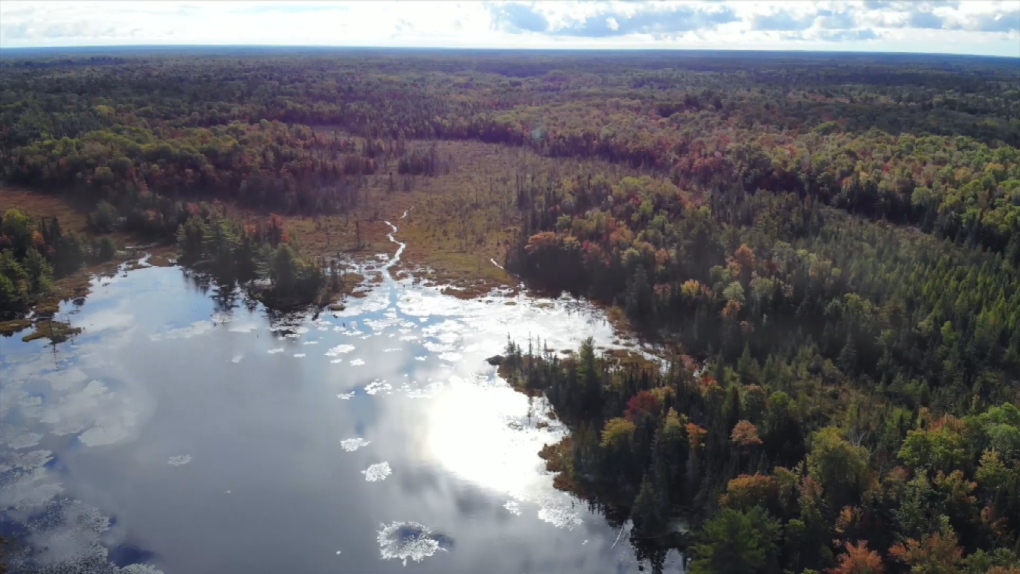Northern Ont. First Nation receives new land conservation funding
Environment and Climate Change Canada (ECCC) says conserving land is crucial to maintaining biodiversity and preserving habitats that support diverse species and ecological processes.
"By working together to protect natural areas, we will better connect networks of conserved areas," said the government agency in a news release.
"Contributing to the sustainability of local communities so they can adapt to environmental changes."
On Aug. 7, Toronto–Danforth MP Julie Dabrusin and Newmarket–Aurora MP Tony Van Bynen announced a more than $12.5 million investment by the federal government in Canada Nature Fund and Enhanced Nature Legacy funding through the Target 1 Challenge program with Conservation Ontario to support the acquisition of land.
This funding has resulted in the conservation of more than 1,600 hectares of land in the province.
ECCC officials called the investment a crucial step toward increasing habitat for species at risk; helping to tackle climate change and supporting conservation, restoration, and protection of our natural environment.
 An undated promotional photo of Shawanaga Island, where the Shawanaga First Nation is looking to establish an Indigenous protected and conserved area. (Supplied/Shawanaga First Nation | Photo Credit: Shared Value Solutions)
An undated promotional photo of Shawanaga Island, where the Shawanaga First Nation is looking to establish an Indigenous protected and conserved area. (Supplied/Shawanaga First Nation | Photo Credit: Shared Value Solutions)
Shawanaga Island – where the Shawanaga First Nation is looking to establish an Indigenous protected and conserved area – is among the areas receiving funding.
Those behind the idea of an Indigenous lead conservation area on the island told CTV News that the funding will help conserve important species, protect food security while helping to facilitate understanding of and respect for Indigenous way of life.
 An undated promotional photo of Shawanaga Island, where the Shawanaga First Nation is looking to establish an Indigenous protected and conserved area. (Supplied/Shawanaga First Nation | Photo Credit: Shared Value Solutions)
An undated promotional photo of Shawanaga Island, where the Shawanaga First Nation is looking to establish an Indigenous protected and conserved area. (Supplied/Shawanaga First Nation | Photo Credit: Shared Value Solutions)
"20 per cent of the world's land is Indigenous land and it holds 80 per cent of the world's biodiversity," said Andrew Byrne of Shawanaga First Nation.
"Throughout time Indigenous-led conservation has far surpassed what western science has done."
He said the idea of the unique conservation area is to blend western science with traditional knowledge to further the conservation efforts.
Byrne added the First Nation is still working with the federal government in a bid to officially establish the Indigenous conservation area.
 An undated promotional photo of Shawanaga Island, where the Shawanaga First Nation is looking to establish an Indigenous protected and conserved area. (Supplied/Shawanaga First Nation | Photo Credit: Shared Value Solutions)
An undated promotional photo of Shawanaga Island, where the Shawanaga First Nation is looking to establish an Indigenous protected and conserved area. (Supplied/Shawanaga First Nation | Photo Credit: Shared Value Solutions)
This Government of Canada funding was matched with conservation authorities, municipal and private funding and some landowner donations.
"The ongoing partnership with Conservation Ontario represents the effort needed to advance Canada's goal of conserving 30 percent of lands and waters by 2030 and help fight against the triple crisis of biodiversity loss, climate change, and pollution," said ECCC officials.
The federal government advised it remains committed to working closely with conservation partners, other levels of government and all Canadians.
"Together, we are building a stronger, more resilient network of protected areas for the benefit of our environment, communities, and future generations," said Angela Coleman, the general manager of Conservation Ontario, in a news release.
CTVNews.ca Top Stories

Man in Cybertruck was shot in head before explosion outside Trump's Las Vegas hotel, sheriff says
The person inside the Tesla Cybertruck that burst into flames outside U.S. President-elect Donald Trump's Las Vegas hotel suffered a gunshot to the head before the explosion, officials said Thursday.
Possible scenarios that could play out in Ottawa as the Liberal government teeters
Prime Minister Justin Trudeau is said to be reflecting on his future over the holidays after the resignation of his top cabinet minister, Chrystia Freeland, in mid-December. The bombshell move prompted a fresh wave of calls for Trudeau to step down as Liberal leader from inside and outside the caucus.
5 things we know and still don't know about COVID, 5 years after it appeared
The virus is still with us, though humanity has built up immunity through vaccinations and infections. It's less deadly than it was in the pandemic's early days and it no longer tops the list of leading causes of death. But the virus is evolving, meaning scientists must track it closely.
FORECAST Weather warnings issued in 7 provinces and territories
Wintry weather conditions, including heavy snow and wind chill values around -55, prompted warnings in seven provinces and territories Thursday.
Woman, father killed on New Year's Eve were victims of intimate partner violence: Halifax police
Halifax police are investigating three deaths that are connected – two of which they say were homicides resulting from intimate partner violence – in the city on New Year’s Eve.
Toys "R" Us Canada closing 5 stores, expand HMV and add play spaces to some shops
Toys "R" Us Canada says it is closing five Ontario stores and revamping several others as it works to "optimize" its business.
Who are Canada's top-earning CEOs and how much do they make?
Canada's 100 highest-paid CEOs earned $13.2 million on average in 2023 from salaries, bonuses and other compensation, according to the Canadian Centre for Policy Alternatives.
Sask. RCMP locate missing inmate of Yorkton prison
An inmate who was wanted for being unlawfully-at-large after not returning to Whitespruce Provincial Training Centre in Yorkton has been found and arrested.
LIVE UPDATES FBI says the New Orleans truck attacker acted alone in an 'act of terrorism'
The FBI now says the New Orleans truck attacker acted alone in an 'act of terrorism' when he drove a pickup truck into a crowd of New Year's revellers early Wednesday, killing 14 people.


































